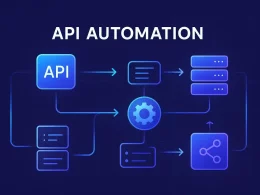Introduction
In the ever-evolving landscape of technology, optimizing performance while conserving power has become a crucial aspect of device design. Adaptive throttling mechanisms play a pivotal role in regulating the speeds of Central Processing Units (CPUs) and Graphics Processing Units (GPUs) in real-time, ensuring a balance between performance and power consumption. This article aims to delve into the intricate workings of these mechanisms, exploring how they dynamically adjust CPU and GPU speeds based on usage to maintain efficiency without compromising on performance.
Understanding Adaptive Throttling
Adaptive throttling involves the dynamic adjustment of CPU and GPU clock speeds, voltages, and power consumption based on the current workload. Modern devices employ various sensors and algorithms to monitor temperature, power draw, and usage patterns to make real-time adjustments. For CPUs, this might involve altering clock frequencies, while for GPUs, it can entail modifying core frequencies or memory speeds.
Real-Time Usage Analysis
One of the key aspects of adaptive throttling is the continuous monitoring of workload demands. Sensors embedded within the hardware constantly track factors like temperature, voltage, CPU/GPU utilization, and more. Algorithms then interpret this data to make informed decisions about whether to increase, decrease, or maintain clock speeds.

Maintaining Performance
Despite the dynamic adjustments, maintaining consistent performance remains a priority. Throttling mechanisms are designed to ensure that the user experience isn’t compromised during regular tasks or demanding applications. This is achieved by optimizing clock speeds to match the workload’s requirements while staying within thermal and power limits. CPU and GPU Coordination: In many systems, the CPU and GPU work in tandem for various tasks. Adaptive throttling mechanisms coordinate between these components to allocate power and resources effectively. For instance, during gaming, where both CPU and GPU are intensely utilized, the system might prioritize distributing power according to the workload’s demands, ensuring a smooth gaming experience.
Balancing Power Consumption
Efficiency in power consumption is a critical goal of adaptive throttling. By dynamically adjusting clock speeds and voltages, devices aim to optimize performance-per-watt ratio. This not only extends battery life in mobile devices but also reduces heat dissipation and overall energy consumption in all devices.
Challenges and Limitations
Despite their benefits, adaptive throttling mechanisms face challenges. Over-aggressive throttling can lead to performance drops, affecting user experience. Balancing between performance and power savings without compromising one for the other remains a constant challenge.

Future Prospects
As technology advances, so does the sophistication of adaptive throttling mechanisms. AI-driven algorithms and machine learning may further refine these systems, enabling devices to learn usage patterns and optimize performance more intelligently. Additionally, advancements in cooling solutions and semiconductor technologies might mitigate the limitations faced by current throttling mechanisms.
Conclusion
Adaptive CPU and GPU throttling mechanisms represent a critical aspect of modern device design, ensuring a delicate balance between performance and power efficiency. Through real-time analysis of usage patterns and workload demands, these mechanisms optimize the performance of CPUs and GPUs while minimizing power consumption. As technology progresses, the evolution of these mechanisms will continue to shape the efficiency and performance capabilities of future devices. This overview covers the intricate balance that adaptive throttling strikes between performance and power efficiency in CPUs and GPUs.












